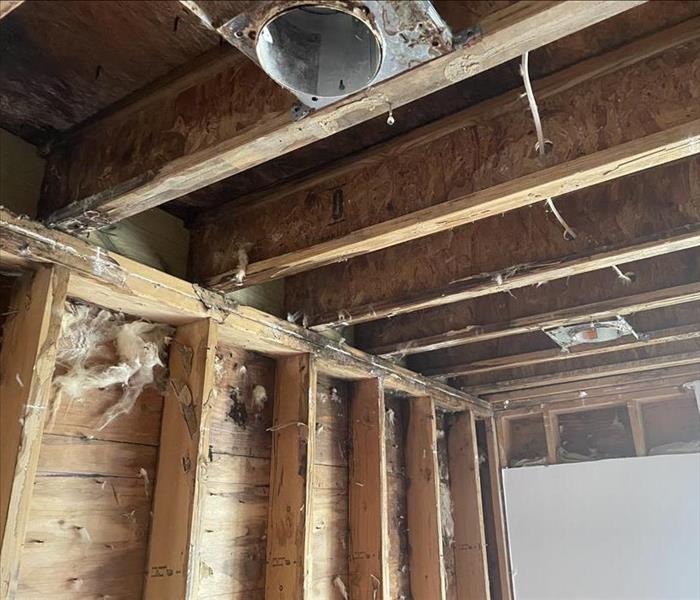Dealing with Mold in Insulation: Strategies for Detection and Remediation
7/10/2024 (Permalink)
 We discuss the challenges of dealing with hidden mold in insulation and provide practical strategies for detection and remediation.
We discuss the challenges of dealing with hidden mold in insulation and provide practical strategies for detection and remediation.
Mold growth in insulation can be a challenging issue to tackle, especially when it's hidden from plain sight. Insulation provides an ideal environment for mold to thrive, as it can trap moisture and organic materials. Identifying and addressing mold in insulation is crucial for maintaining a healthy indoor environment. In this blog post, we'll discuss the challenges of dealing with hidden mold in insulation and provide practical strategies for detection and remediation.
Challenges of Hidden Mold in Insulation
Concealed Growth
Mold can proliferate within insulation materials without being readily visible. Since insulation is typically installed within walls, ceilings, or floors, mold growth may go unnoticed for extended periods, allowing it to spread and cause damage.
Trapped Moisture
Insulation can trap moisture from leaks, condensation, or high humidity levels, creating an environment conducive to mold growth. Once moisture becomes trapped within the insulation, it can promote the proliferation of mold spores, even in areas with limited airflow.
Structural Impact
Mold growth within insulation can compromise its effectiveness and structural integrity. As mold colonies consume organic materials within the insulation, they can weaken its structure and reduce its thermal insulation properties, leading to potential energy inefficiency and structural damage.
Detection Strategies for Mold in Insulation
Visual Inspection
Perform a thorough visual inspection of accessible insulation areas for signs of mold growth. Look for discoloration, musty odors, or visible mold growth on the surface of insulation materials.
Moisture Testing
Use moisture meters or infrared cameras to detect hidden moisture within the insulation. Elevated moisture levels can indicate potential mold growth, even in the absence of visible signs.
Air Sampling
Consider conducting air sampling tests to detect mold spores in indoor air. While air sampling may not directly identify mold within insulation, it can provide valuable insights into overall indoor air quality and the presence of mold contamination.
Remediation Techniques for Mold in Insulation
Professional Assessment
If mold growth is suspected in insulation, seek the expertise of a professional mold remediation company like SERVPRO®. Trained technicians can conduct a comprehensive assessment to determine the extent of the mold problem and recommend appropriate remediation measures.
Removal and Replacement
In cases of extensive mold contamination, removal and replacement of affected insulation may be necessary. Professional remediation technicians can safely remove contaminated insulation and install new, mold-resistant insulation materials.
Moisture Control
Address underlying moisture issues to prevent mold recurrence in insulation. Implement moisture control measures such as repairing leaks, improving ventilation, and reducing humidity levels to create an inhospitable environment for mold growth.
Dealing with mold in insulation requires careful detection and remediation to ensure a healthy indoor environment. By being vigilant for signs of mold growth, employing detection strategies, and seeking professional remediation assistance when needed, you can effectively address hidden mold in insulation and maintain a clean and mold-free home or building.




 24/7 Emergency Service
24/7 Emergency Service